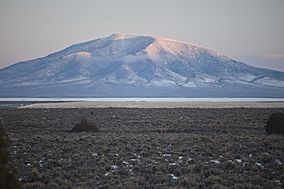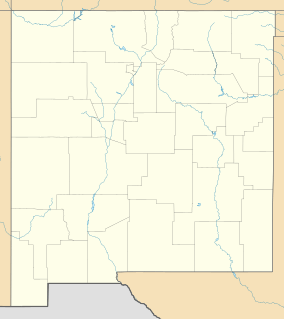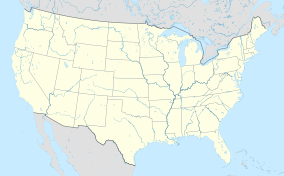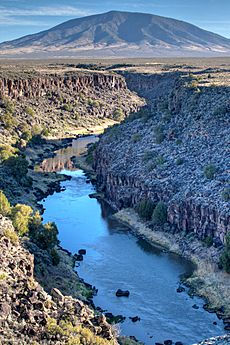Rio Grande del Norte National Monument facts for kids
Quick facts for kids Rio Grande del Norte National Monument |
|
|---|---|

Río Grande del Norte, New Mexico.
|
|
| Location | Taos County, New Mexico, United States |
| Nearest city | Questa, New Mexico |
| Area | 242,555 acres (98,159 ha) |
| Established | March 25, 2013 |
| Governing body | U.S. Bureau of Land Management |
| Website | Rio Grande del Norte National Monument |
The Rio Grande del Norte National Monument is a huge protected area in Taos County, New Mexico. It covers about 242,555 acres (98,159 hectares) of public land. President Barack Obama created it on March 25, 2013, using a law called the Antiquities Act.
This monument includes the amazing Rio Grande Gorge and the lands around it. The Bureau of Land Management (BLM) takes care of this special place. It has two recreation areas and parts of the Rio Grande and Red River that are protected as "Wild and Scenic Rivers." In 2019, two new wilderness areas were added inside the monument: the Rio San Antonio Wilderness and the Cerro del Yuta Wilderness.
Contents
Nature and Environment
The monument sits on a volcanic area called the Taos Plateau. Deep canyons, or gorges, have been carved into it by the Rio Grande and Rio San Antonio rivers.
Volcanoes and Mountains
You can see several volcanic peaks here. Ute Mountain is the tallest peak completely inside the monument, reaching 10,093 feet (3,076 meters) high. San Antonio Mountain, the tallest in the whole volcanic area at 10,890 feet (3,319 meters), is partly within the monument's borders. These volcanoes and the plateau were formed by the Rio Grande rift, a long crack in the Earth's crust that stretches from Colorado to Mexico.
Plants and Animals
The monument has many different types of environments. Near the rivers, you'll find willow and cottonwood trees. On the open plains, there are sagebrush plants. As you go higher, you'll see pinyon pines, and even higher, ponderosa pines and Douglas-fir trees.
This area is home to many birds, both those that live there all year and those that migrate. You might spot large mammals like elk, mule deer, pronghorn, and bighorn sheep. There are also predators such as cougars, bobcats, river otters, black bears, and coyotes. The plateau is an important place for many of the larger grazing animals to spend the winter.
History of the Land
People have lived in the Rio Grande valley for a very long time, even thousands of years ago. We know this from petroglyphs (rock carvings) and old stone tools found in the area. San Antonio Mountain was a key place for getting stone to make tools. Other old items found include pieces of pottery and remains of ancient pit houses.
Later, Native American groups like the Jicarilla Apache, Utes, and people from Taos Pueblo and Picuris Pueblo lived in this region. In more recent history, some people tried to settle here in the early 1900s, but it was difficult. You can still see the abandoned remains of their old homes.
Fun Activities to Do
The Rio Grande del Norte National Monument offers many exciting things to do outdoors!
Water Adventures
- Rafting and Boating: A very popular activity is rafting or boating through the Rio Grande Gorge. The rapids can be gentle (Class II) or very challenging (Class V). You can join commercial tours if you don't have your own gear.
- Fishing: You can fish for brown trout, rainbow trout, and northern pike in the Red River and Rio Grande. Just make sure to follow New Mexico's fishing rules.
Land Exploration
- Biking: If you like mountain biking, there are special trails and roads where you can ride your bike.
- Off-Highway Vehicles: You can use off-highway vehicles on certain roads within the monument.
- Driving: Several paved roads cross the monument, including the Wild Rivers Backcountry Byway and U.S. Routes 64 and 285. Route 64 crosses the Rio Grande Gorge on the amazing Rio Grande Gorge Bridge, which is 660 feet (201 meters) high!
- Hunting: Hunting is allowed in the monument, but you must follow all game regulations.
Camping
There are five campgrounds in the monument, including one right in the river gorge, perfect for staying overnight and enjoying nature.
How the Monument is Managed
The Bureau of Land Management (BLM) takes care of the Rio Grande del Norte National Monument. It's part of a bigger group of special places called the National Landscape Conservation System.
Rules and Regulations
- Mining: New mining for minerals is not allowed in the monument, except for claims that existed before it became a monument.
- Utilities: The BLM also manages existing power lines and other utility rights-of-way.
- Traditional Rights: Native American groups still have their traditional access and grazing rights.
- Vehicles: You can only use motorized vehicles on roads that are specifically marked for them.
Visitor Centers
The monument has two visitor centers to help you learn more:
- The Wild Rivers Visitor Center is located near Questa.
- The Rio Grande Gorge Visitor Center is near the Orilla Verde Recreation Area, close to Pilar.
The monument is managed from the BLM's office in Taos.




